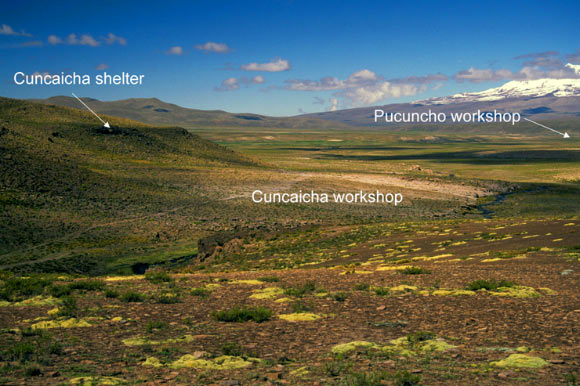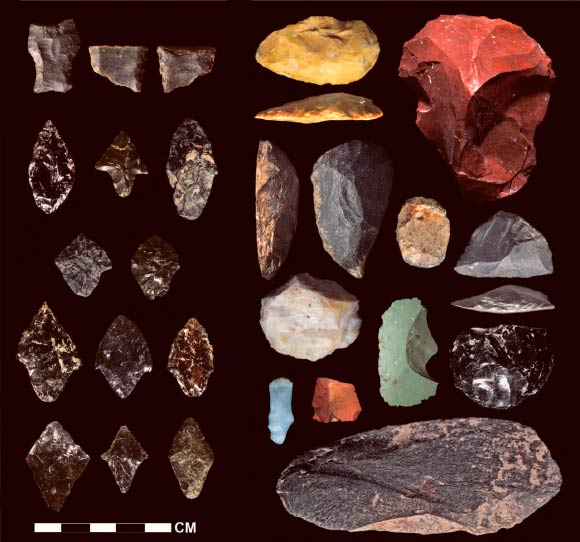Archaeologists from the United States, Canada, Germany, and Peru, have discovered two ancient settlements in the Pucuncho Basin in the southern Peruvian Andes – named Cuncaicha and Pucuncho – which they say are the highest-altitude Pleistocene archaeological sites yet identified in the world.

Photograph of Pucuncho Basin, facing west, showing the Cuncaicha shelter and the Pucuncho workshop. Image credit: Kurt Rademaker et al.
One scientific theory about high altitude colonization suggests that people cannot live in high altitudes until genetic adaptation occurs, like the sort we find in Andean people today.
Andeans have genetically adapted to their high altitude environment.
Key differences in the Andean people include a higher metabolic rate, larger lung capacity and higher hemoglobin concentrations then the average person, all of which allow them to overcome a lack of oxygen.
“Was this adaptation present 12,000 years ago? We don’t know for certain,” said Dr Sonia Zarrillo of the University of Calgary, who is a co-author of the paper published in the journal Science.
The first site Dr Zarrillo and her colleagues discovered, Cuncaicha, is a rock shelter at 4.5 km above sea level, with a stone-tool workshop below it.
According to the archaeologists, it was occupied about 12,400-11,500 years ago.
The second site, Pucuncho, is an ancient workshop where stone tools were made at 4.4 km above sea level. It dates to around 12,800-11,500 years ago.
“We don’t know if people were living there year round, but we strongly suspect they were not just going there to hunt for a few days, then leaving. There were possibly even families living at these sites, because we’ve found evidence of a whole range of activities,” Dr Zarrillo said.

Stone tools found at Cuncaicha and Pucuncho sites in Peru. Image credit: Kurt Rademaker et al.
“Climatic conditions in both sites are harsh, with factors including low-oxygen, extreme cold and high levels of solar radiation making life in the region a challenge for any humans.”
She added: “our team hiked up to three or four hours to get to these sites. That was a climb, carrying all of our gear, camp equipment and food. And it freezes every night. Sometimes it snows. These are incredibly hard sites to access.”
Archaeological evidence found at the sites includes signs of habitation such as human skull fragments, animal remains and stone tools.
The Pucuncho site yielded 260 stone tools, such as projectile points, bifaces and unifacial scrapers. The Cuncaicha rock shelter contains a “robust, well-preserved and well-dated occupation sequence.”
“Most of the stone tools at Cuncaicha were made from locally available obsidian, andesite and jasper, and are indicative of hunting and butchering consistent with limited subsistence options on the plateau. In addition to plant remains, bones at the site indicate hunting of vicuña and guanaco camelids and the taruca deer,” the scientists said.
“At Cuncaicha we found remains representing whole animals. The types of stone tools we’ve found are not only hunting tools but also scraping tools used for processing hides to make things like clothing, bags or blankets,” Dr Zarrillo said.
_____
Kurt Rademaker et al. 2014. Paleoindian settlement of the high-altitude Peruvian Andes. Science, vol. 346, no. 6208, pp. 466-469; doi: 10.1126/science.1258260







